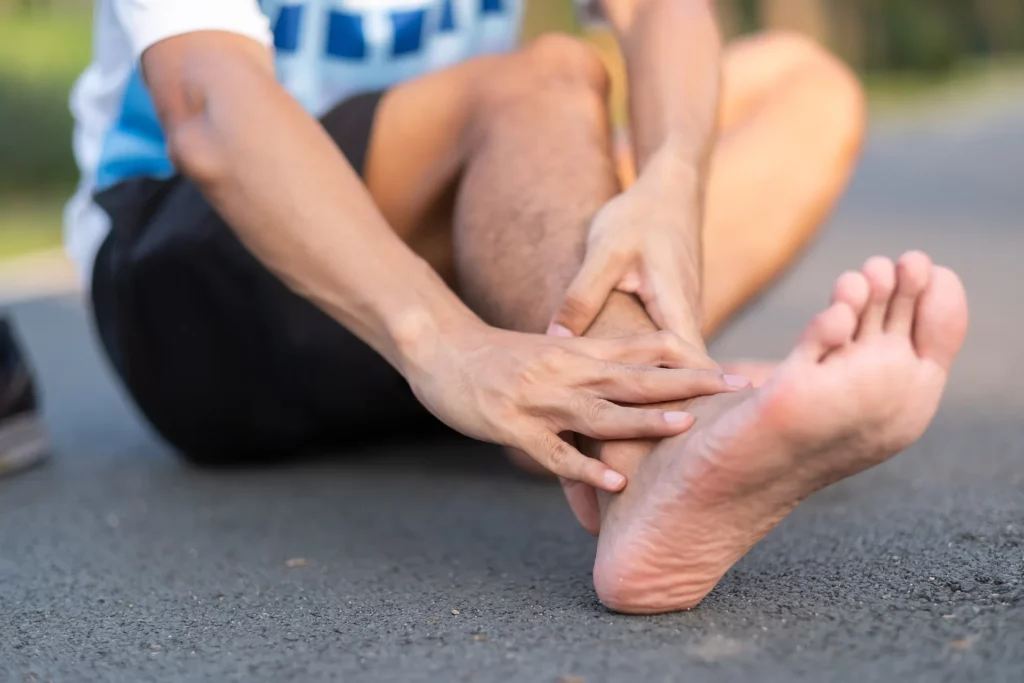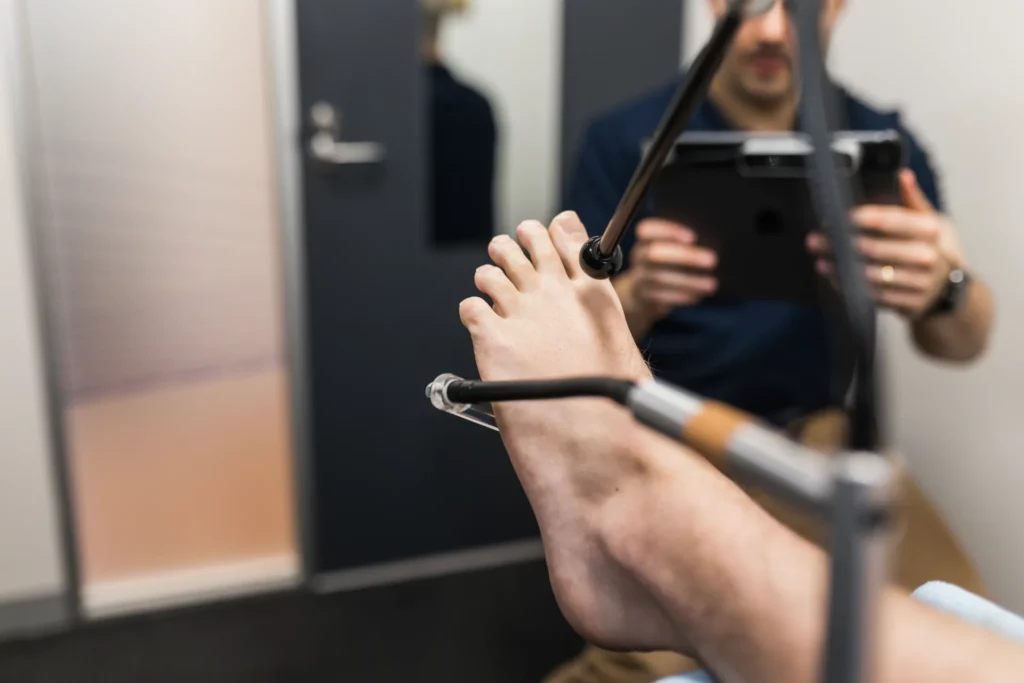Forefoot Pain (Bursitis/Morton’s Neuroma)

Symptoms
There are multiple different causes for forefoot pain, common ones being
- Morton’s Neuroma (irritation/scarring of nerves in between the long toe bones),
- Bursitis (inflammation of soft tissue between long toe bones),
- Joint synovitis (inflammation of the balls of your feet)
- Plantar plate injury (injury to a ligament in your toe)
- Sesamoiditis (irritation of small bones under your big toe)
Symptoms can vary greatly based on the cause and can range from aching, sharp pain to burning and tingling. Sometimes the pain will start small and slowly build, other times it could come suddenly after a trip/fall, trauma or activity like a run or a hike.
Given the variety of different causes, it’s important to get an accurate understanding of what’s causing your pain to effectively understand and treat it.
How our services can help with this condition
I’m able to help people by assessing and diagnosing the cause of their pain. Sometimes we require a scan such as an ultrasound or MRI, which I’m able to order and interpret the results.
Once we’ve identified what is occurring, we can work together to figure out what would be the best treatment plan for you and your activity.
Common treatments include:
- Prescribing specific footwear
- Padded insoles
- Taping
- Gait re-training (temporarily altering your running style to reduce pain)
- Exercise rehabilitation

Forefoot Pain FAQs
I’ve been told I have a Morton’s Neuroma. What should I do about it?
Morton’s neuroma is a common diagnosis used as a catch-all for people experiencing numbness, or tingling in their toes. While a neuroma, or scarring of the nerve can cause those symptoms, there’s often something else that’s irritating the nerve. Unless a neuroma has been found on an ultrasound/MRI, we’d need to figure out what’s specifically causing your pain to then figure out what’s the next best step for you to take.
Will I have to wear grandma shoes to reduce my pain?
For some people with high levels of pain, wearing less dressy shoes, or sneakers may be required for a period of time to get their condition under control.
For most people, it’s not about wearing orthopaedic shoes or sneakers all the time, but about finding high quality shoes, which are the appropriate shape and size for your feet. That can some compromises (ditching the ballet flats and stiletto heels), but there’s now a lot of brands out that make really nice shoes that are also really comfortable and helpful
Just ask my wife. When we started dating I introduced her to a few of these brands and now we have a wardrobe filled with them.
